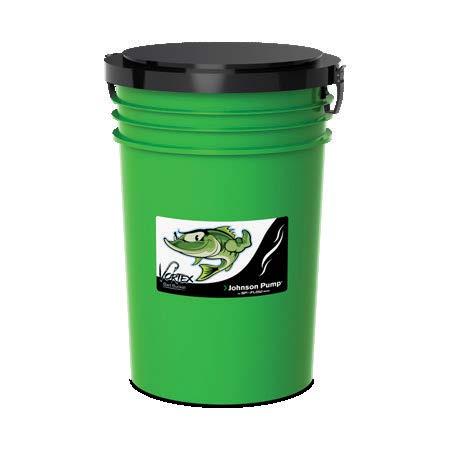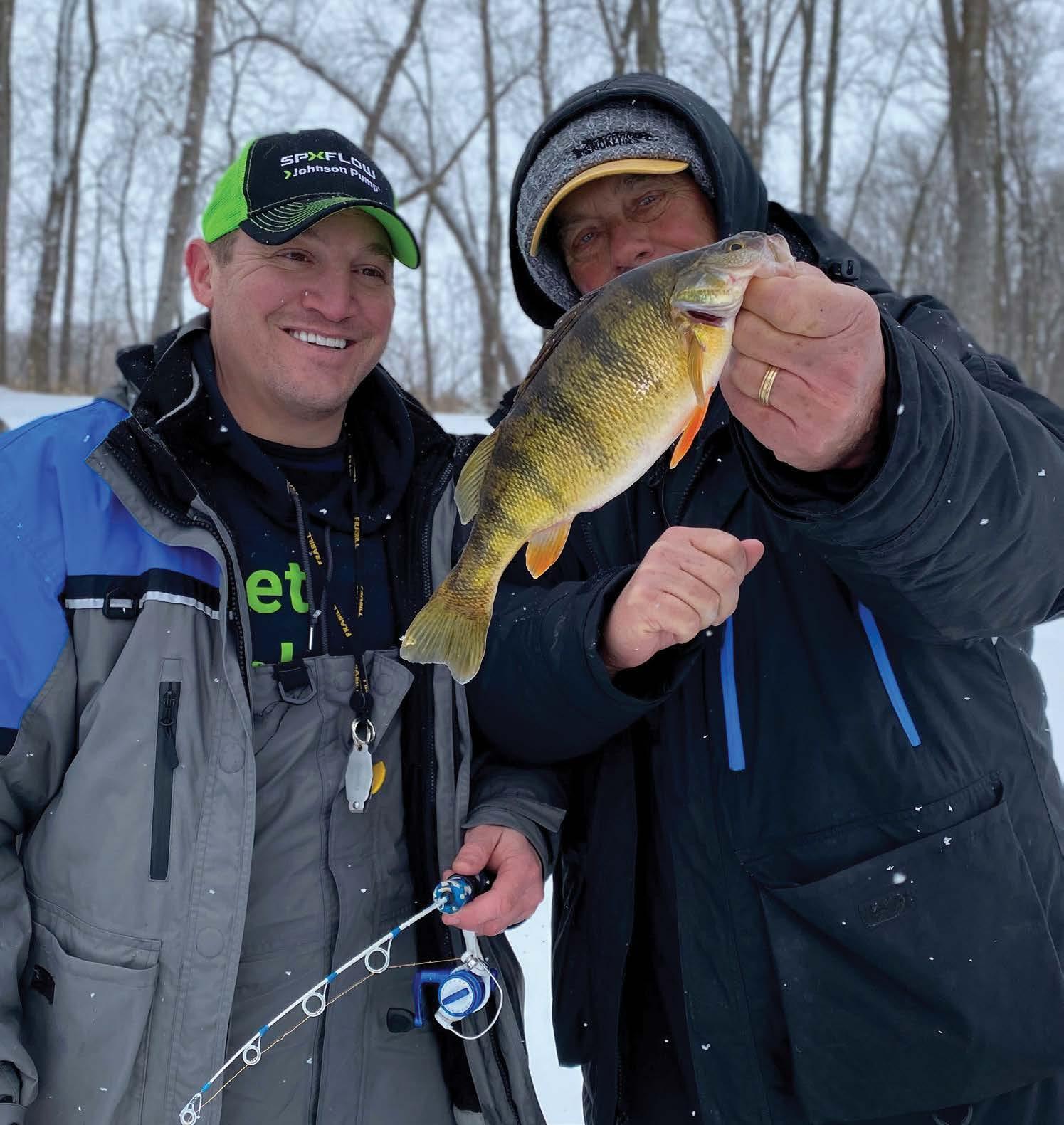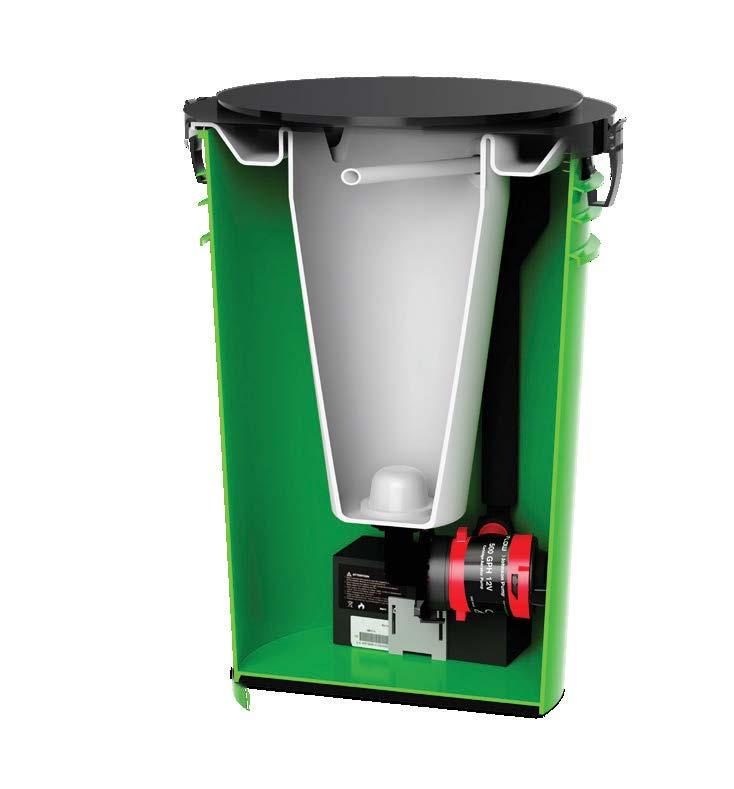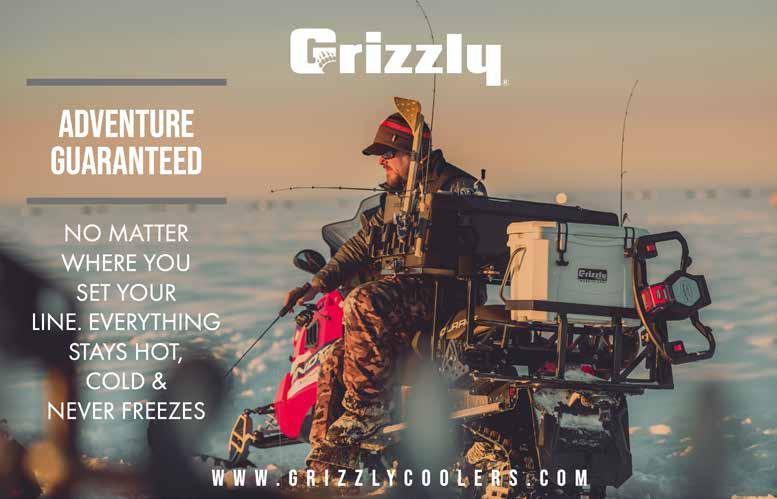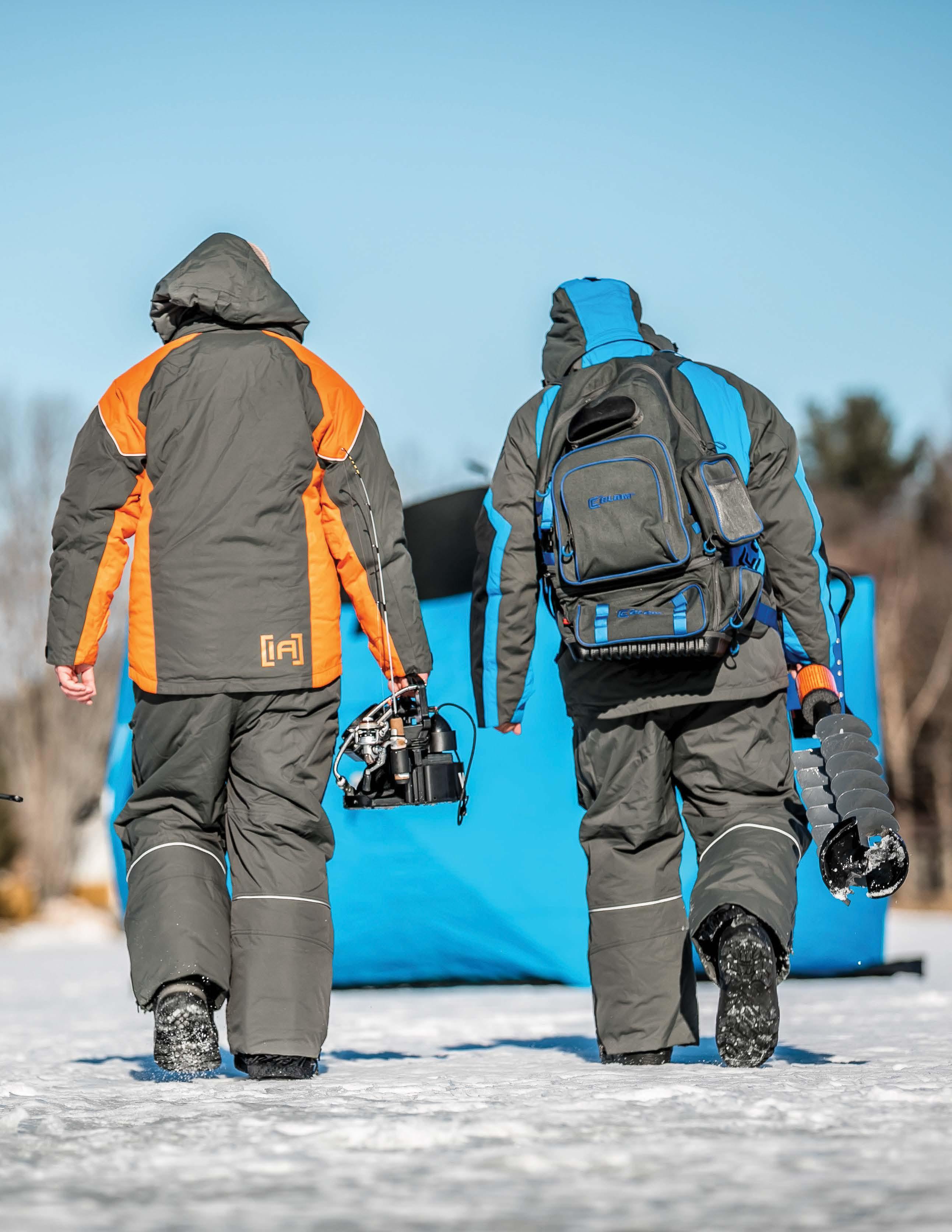



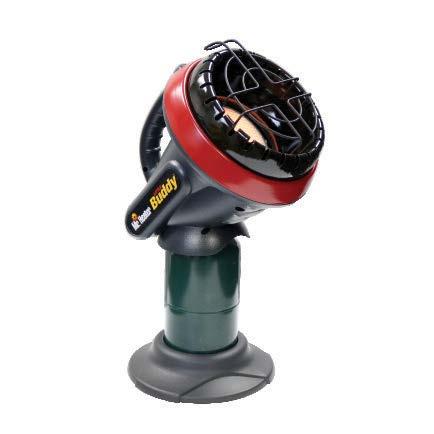














Bring out the best in your fresh catch with Shore Lunch breading. Try our soup mixes, batter and other comfort food favorites too!



NOW
Visit us online for recipes, products and more at ShoreLunch.com
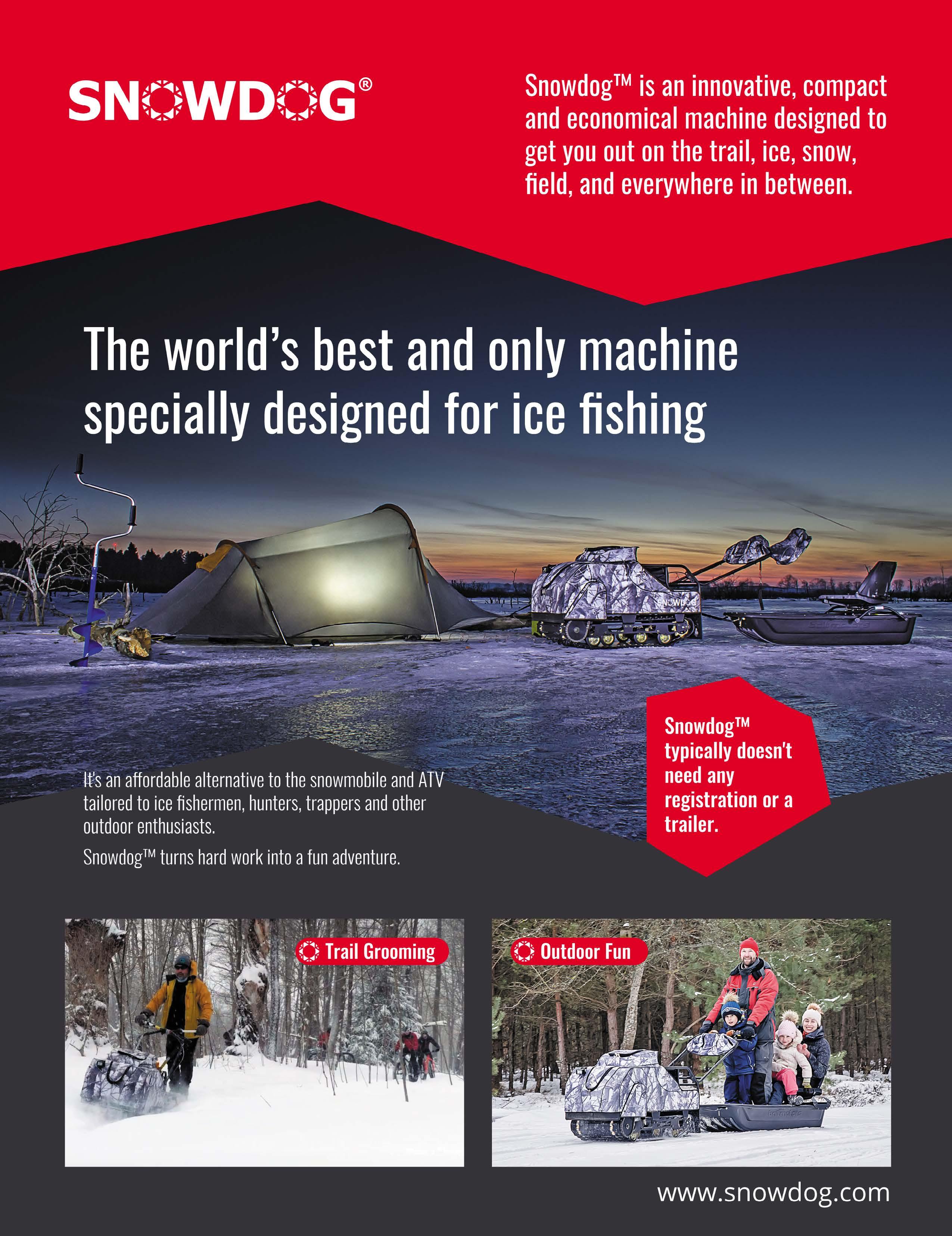


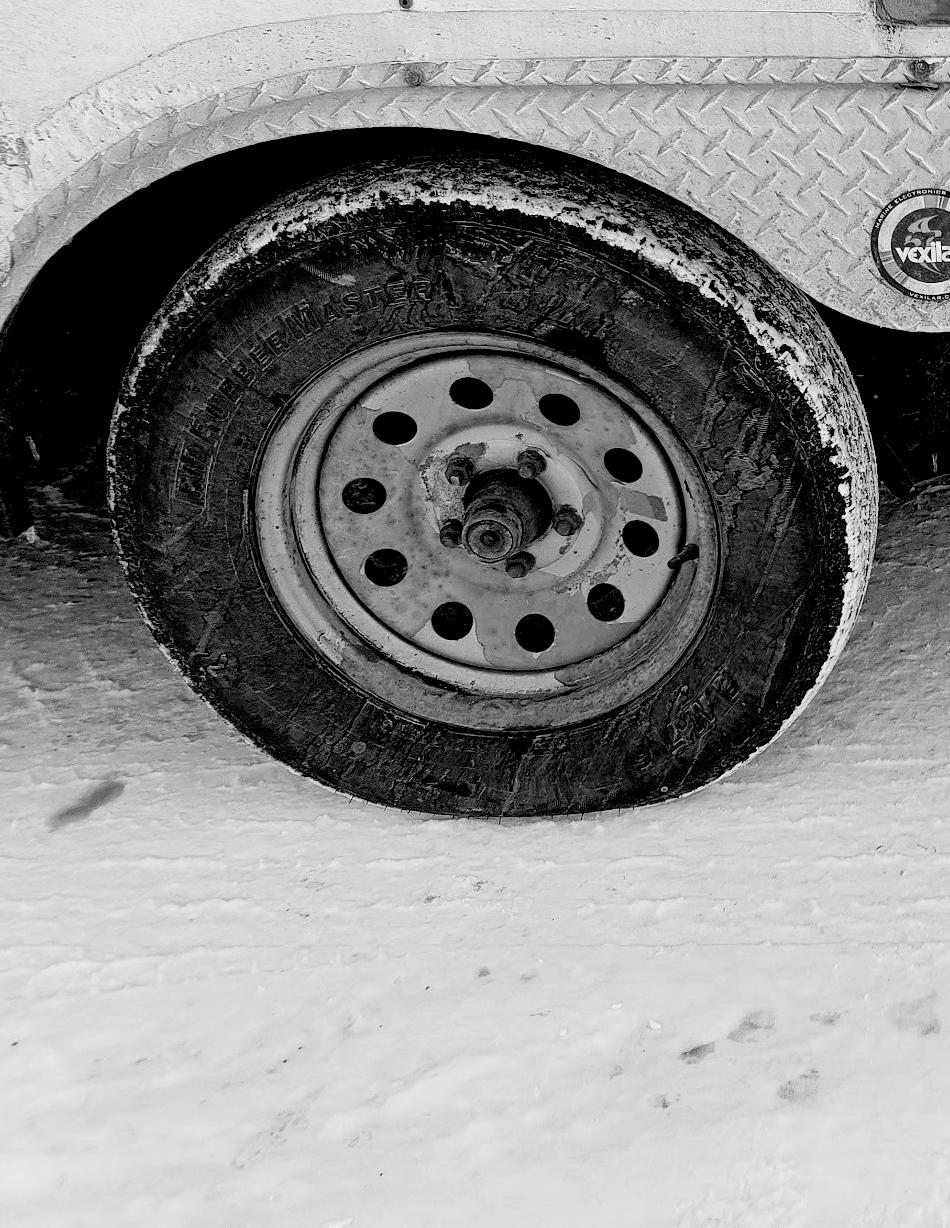 BY: MIKE HOWE
BY: MIKE HOWE

While open water fishing trips can be impacted by weather, rarely are the conditions as severe as they are in the winter. A little wind, a little rain, maybe some road construction, but usually it is not insurmountable. When planning to travel for ice fishing however, there are dozens if not hundreds of things that can impact travel plans, not the least a worldwide pandemic!
When planning to travel for an ice fishing trip, whether it is a destination bucket list trip from the Midwest to
Fort Peck in Montana, or as far as Lake Cascade in Idaho, it is important to prepare for obstacles that can pop up so you have an opportunity to salvage your best laid plans. Basically we are talking road trips here, and it can apply equally to a weekend trip up to Lake of the Woods or a three week trip across the ice belt states. I’ve done both types and had it easy and had it where everything conspired against me. At no time did I tuck my tail and return home, we fished even though it wasn’t our original plan.
Many, MANY ice anglers who travel to Canada every winter have
had to make alternative plans due to border closures. My outfitting business should be hosting hundreds of anglers this winter who have called and said “We’ve always wanted to come to Peck, this is our year”! But guess what? NO ICE at Fort Peck as of mid January, and we aren’t sure when we will have any.
The plan B for these anglers? I am now licensed to guide in North Dakota as well, and will be hosting some of these groups on waters from Devils Lake to the Canadian border! We won’t be targeting Lake Trout and 30” Walleye, but will be fishing and
introducing anglers to new waters. And if winter decides to show up at Peck before then, they can drive right on by and revert to the original plan.
Maybe you need a Plan B because a couple of buddies had to bail out at the last minute and you don’t want to change your plans, time off from work, non-refundable deposits, whatever. Get on the internet and start looking for something closer to home, or better yet, arrange to fish with some locals or hook up with some others planning the same trip. There are so many ice fishing groups online these days that a call to action will return dozens, if not hundreds of responses.
And of course, there is winter weather at play here. Blizzards, storms of the century, road closures or airport delays and closures can
all destroy a plan. A few years back, some friends were coming out to NW Montana to ice fish for a week, but weather at the last minute stopped them before they could get out of Northern Wisconsin.
There was no way they were going to detour South around the storm and make it to Montana in time to make it worth their while so I got on the horn with some friends in South Dakota, who had some friends in the Glacial Lakes region and got them on some great Yellow Perch, Pike and Walleye fishing! In return, I gathered some intel that I was able to use a couple years later when I travelled through that same area!
Lastly, lets talk about equipment problems. As a guide, am fortunate in that I have a lot of duplicate and triplicate equipment. Not everyone
has the luxury of four Vexilar FLX28’s at their disposal, but just about everyone can have a spare FL-8 as a back-up. Or a small pop-up shelter if their main flip over gets mangled on the ice. I have learned to separate my favorite jigs and lures into two identical tackle boxes that are never on the ice at the same time.
No matter what your winter fishing plans involve, you have to think about some alternate scenarios, rather than sitting at home or worse yet, a hotel, waiting for a situation to change! There are dozens of ways to prepare for worse case scenarios so that your precious ice time does not suffer when Mother Nature, Mr. Murphy or your best buddy tosses you a curve!



When it comes to winter ice fishing, I like to keep it simple. I also like to catch fish. And yes, these two concepts are totally compatible.
One of the ways I keep my ice fishing simple is by focusing most of my ‘searching for panfish energy’ to one area. That area would be basins, or deep holes in a lake’s structure that will range from 20 to 40 feet in depth.
Although not every lake has a nice deep basin or two that will congregate crappies and some bluegills, many of them do. Any lake map will clearly show the location of these basins and will make it easy for anglers to find them.
possible. However, when it works, it allows me to cover a lot of territory in a very short time. It also saves battery life on my auger and wear and tear on my body.
Recently, I have been incorporating a Garmin LiveScope to assist with my searching routine. This cuts the location time down significantly.
Once I do locate deep basin fish, which are usually crappies, I drill out a good sized area with my auger before I ever drop a line. I do this for a couple of reasons.
Often times, I find that other anglers have done the location work for me. Many of the lakes I fish will have small clusters of houses set up in and around the deep basin. There is usually a well traveled road right to these basin locations that makes navigation easy.
Once at the basin, I make an effort to a look for fish on the upward slope of the basin first and not necessarily in the very deepest part of the hole. However, since the fish I am targeting will be suspended, they can be over the very deepest depths, as well.
I do most of my looking by pouring water on the ice and shooting through with my Vexilar. Depending on the snow conditions, this isn’t always
Many times, the fish that I locate will spook when I start working the auger. Multiple holes in the area usually allows me to find where they have wandered to.
Deep basin fish are real roamers and will move around even without being spooked by an auger. Having multiple holes allows me to have a better chance of finding them once they do move.
It is very rare to sit on a hole and catch one fish after another. They just wander too much. By staying in one place, odds are the suspended panfish will eventually return. However, I find I have much better success by trying to follow the fish as they roam about.

As always, my standard fishing rig for basin fish consists of two-poundtest line, a small tungsten jig (Clam’s Drop Kick is my favorite) with a plastic tail and one Euro larva on the hook for good measure. I am a big fan of spring bobbers, as well. In really deep water, increase the weight of your jig.
Although I fish a variety of structural elements in the winter, there is no doubt that my favorite is deep basins. I have more success in these deep-water haunts than anyplace else.




 By: Jason Mitchell
By: Jason Mitchell
Sticking a lively minnow in front of fish hasn’t really changed a whole lot over time. With all the technology, sonar, map chips and other tools to help us catch fish… there are times each winter when we have to go back to the basics. The mantra lately has been a power fishing approach where we aggressively jig lures to break down water fast and try to contact the most aggressive fish. The opposite of that approach is sitting on key locations with a lot more of a patient and methodical approach with dead sticks. Note as well that aggressively jigging works extremely well in conjunction with dead sticks. Not every fish will have the same mood or temperament. Some fish want that more aggressive presentation. The fish that snub the aggressive presentation however will often make a mistake with the nearby dead stick. A classic one-two punch where aggressively jigging lures compliment the dead stick. There are also states or provinces where anglers can run several lines. In places where it is legal to use multiple rods, if you are going to sit somewhere… you might as well have as many lines in the water as you legally can.
What is a dead stick? What is dead sticking? Just a term for a
set line running a live minnow. Typically, this line just sits where you aren’t physically holding the rod and the minnow is doing the work. Really simple and often a deadly presentation but there are many nuances to experiment with. As we get into mid to late winter, dead sticks often shine when the fish aren’t as aggressive as what you typically see at early or late ice. Dead sticks also seem to shine whenever you have moderate to heavy fishing pressure or lower densities of fish. At the end of the day, a plain hook, split shot and lively minnow will catch fish when nothing else is working. So often when nothing is working well, we end up going back to the basics.
There are several effective ways to run a set line. You can use a tip up for example, or a rattle reel inside a fish house. You can use a slip bobber. My favorite way to run a dead stick is to simply use a longer soft tip rod and lay the rod on a bucket or some type of rod holder where I can watch the rod tip. A good dead stick rod will have a good stiff backbone for setting
the hook and fighting a big fish but will also have a limber or soft tip that can dunk when a fish hits the minnow. This type of set up works best where you can both watch the rod tip while you fish and reach the rod quickly. You can watch the minnow work on the tip of a good dead stick rod and often when a walleye approaches, the minnow will start to get
really active which you should be able to watch on the rod tip. If you are looking for a great dead stick rod for walleye, check out the longer 36 inch and 40inch Jason Mitchell Dead Meat Rods. These rods are sold as both a rod and a combo that features a really solid spinning reel. I have typically used

six- or eight-pound monofilament with dead stick rods but have started using a lot more six-pound fluorocarbon over the past couple of years when fishing in really clear water or deep water as the fluorocarbon doesn’t have quite as much stretch as monofilament. If you are targeting big fish, you can increase to eight- or ten-pound test.
On the business end of the dead stick, keep things simple. A size four or six premium baitholder hook with just enough split shot to anchor the minnow is often all you need. At times, adding a little bit of flash or color works well so you can use a small jig or add a bead above a plain hook. A deadly jig hook for dead sticking is the Clam Blade Jig for adding a little bit of color, especially after dark when glow is a factor. I find that I often catch more fish by charging glow jigs after dark. On the toughest bites, a small jig often keeps the minnow from swimming up and away from the fish and the weight of the jig causes the minnow to just roll
in one place. Another trick you can incorporate on tougher bites where fish won’t separate from the bottom is to simply slide the split shot closer to the hook when using a plain hook so
rods, spread them out enough where you don’t get tangled with other lines and just cover as much area as reasonable. On a tough bite where I have to run multiple dead sticks, I like to use a hub shelter just because there is so much more fishable area compared to a flip over shelter. I also like to use a hub shelter if I am specifically targeting big fish on big fish water because when you get a big fish on, you don’t want that fish wrapping up on your partners line sitting and fishing right next to you less than four feet away.
the minnow is pinned into a smaller area. If you need to keep the minnow in one spot, pinch off the tail.

How high off the bottom to fish can depend on the day and the water. Remember that placing the minnow higher off the bottom can often be seen from much further away and the aggressive fish or largest fish will often tend to lift up off the bottom. We have been on Great Lakes fisheries like Green Bay where we fished halfway down in the water column in thirty feet of water right off a sharp break where the adjacent flat was ten to fifteen
WHAT IS A DEAD STICK? WHAT IS DEAD STICKING? JUST A TERM FOR A SET LINE RUNNING A LIVE MINNOW. TYPICALLY, THIS LINE JUST SITS WHERE YOU AREN’T PHYSICALLY HOLDING THE ROD AND THE MINNOW IS DOING THE WORK. REALLY SIMPLE AND OFTEN A DEADLY PRESENTATION BUT THERE ARE MANY NUANCES TO
WITH.

feet. When fishing off sharp breaking structure, we often find that we are more successful hanging the minnows at the same depth as the adjacent nearby structure and catching fish as they slide off or on the flat over the deep water.
On other fisheries, we seldom fish higher than two or three feet off the bottom and there are many tough bites where the fish seem to be hugging the bottom and we are setting the minnow within six inches of the bottom. With multiple rods, don’t be afraid to experiment with different heights off the bottom to see if there is a pattern.
You can also run dead sticks outside and a great tool is the Clam Arctic Warrior. The Arctic Warrior works in conjunction with your dead stick rod and is a metal tip down device that has a flag that pops up when a fish hit. These remote set line systems are very durable and simple. You can run the rod with the bail open or closed. When a fish hits
the minnow, the rod will simply drop down towards the hole and the flag will pop up. You than simply grab the rod and set the hook.
The best minnow can really vary by lake and availability. Large fathead minnows are available almost everywhere and catch plenty of fish. Spottail or golden shiners can really be the ticket on some lakes and are probably the preferred minnow for set lines on many lakes for walleye. Rainbow Dace are also popular as they are robust. Chubs and small sucker minnows can also be deadly but when I have to use larger minnows like chubs and suckers, I find that I often do better by using tip ups.
With smaller minnows like a fathead, shiner or rainbow, I like to use a single hook and hook the minnow through the hide on the side of the minnow right behind the gill. This hook placement seems to give the minnow a lot of action and by positioning the hook close to the head, you can usually set the hook
at the first sign of a bite. Whether you are using a dead stick rod or a slip bobber, lift the rod hard and high to set the hook and crank on the reel handle to set the hook. Don’t swing with your wrist like you would with a lure.
Dead sticking walleyes can just be so incredibly effective at times. When the bite gets tough especially, we often see a large percentage of fish coming off the set lines. Really simple, this presentation or tactic has been around for an awful long time. In fact, before we had the Vexilars, lure assortments and tools that we have today, we caught a lot of fish soaking minnows. To this day, there are many days when we must go back to dead sticks when the fish aren’t aggressive enough or active enough to hit lures. What can also be common is that fish are attracted to jigging lures but eventually hit a dead stick. Don’t overlook dead sticks this winter.



The most convenient way to ensure your tailbone won’t meet that hellaciously hard ice, just strap the Apex Ice Cleat on, grab your auger and start punching holes knowing there’s no ice condition these babies can’t sink their teeth into.










20 MULTI-DIRECTIONAL, SAW-TOOTH STAINLESS CLEATS FOR THE







AND QUICK MOBILITY.








My grandfather and father were catching walleyes well before I was born.
And while much has changed when it comes to the gear we have today compared to what they used back in the days before my youth (think Clam ice shelters, Deluxe Spoon Boxes and Tackle Pouches, just as examples), there’s one thing that still stands the test of time: understanding the behaviors of fish.
And last ice period is no exception.
Early on in the ice-fishing season, walleyes were basically right where they were just before ice up - shallow water along weed beds, especially along points, even more so points with weeds adjacent to deep water were key areas. Mid-winter, these same fish migrated to main-lake basins; sometimes bellied up to bottom, other times suspended high in the water column. By late winter, however, walleyes have procreation
on their minds and are headed towards areas they will spawn.
Where to find these fickle fish at last ice will depend on where it is in the waterway the ‘eyes will go through their reproductive motions.
Weeds, wood, large rocks and gravel; sometimes along a lake’s shoreline, sometimes within the current of a river or stream… These are all places walleyes will spew eggs and milt. Proliferation won’t happen until the ice is off and the waters reach the low to mid-40’s, however.
In the meantime, by last ice, walleyes will slowly start migrating towards these areas. Concentrate your efforts near these places and you’ll find fish this time of year.

Not much changes in a fish’s diet late in the season. Minnows and a
few aquatic insects are still the main forage. Lures that replicate these morsels are still the go-to.
Swimming minnows that dart horizontally, as well vertical jigging spoons and rattle jigs are still a staple. Don’t be afraid to change sizes or cadence every so often. The fish will let you know what they prefer.
Tipping jigs with a whole minnow, minnow half or one of the many scented soft baits will help you get bit. Using a medium-light-powered ice rod, matching reel and a main line of superline of 6-pound test is a great choice when jigging. A footlong leader of 4- to 6-pound-test fluorocarbon, connected with a tiny ball-bearing swivel, and then a small snap (not snap-swivel) for attaching your jig is best.
In my home state of Michigan,
anglers are allowed to use up to three rods and the like, so, while I’m jigging from within my Clam flip-over shanty, I will have two tip-ups out or one tip-up out and then a deadstick rod in a hole from within my shanty. Both my deadstick and tip-ups have similar rigging.
Small, thin-wire treble hooks in size 10 or 12, tied to 4- or 6-poundtest fluorocarbon is my preferred rig mutually. As for the latter, I’ll fill my reel’s entire spool with 6-poundtest fluorocarbon, but will only use a two-foot-long leader of fluorocarbon for the tip-ups. As for weight, I’ll add just enough split-shot to keep a lively minnow in the strike zone. Too much weight and fish have the tendency to drop a bait when they feel the tug of big sinkers as they fall after tripping a tip-up’s flag or pull the bobber of a deadstick down.
One overlooked technique for walleyes is using small baits, like you would for panfish.
Petite jigs in 1/16 ounce, with a softbait emulating nymphs and minute crustaceans skewered to the hook will take more large preditor fish than most angler realize. And light-power rod with 4-pound-test fluorocarbon line is a good paring. It’s always good to nip a few spikes, waxworms or wigglers onto the hook, as well, for natural scent.
Looking to catch more walleyes during late ice period? Search no further than areas close to where walleyes will be spawning once the ice leaves the lakes.
Weed bed edges, or very near wood or rocky areas are a must. Jigging, deadsticking and fishing with tip-ups are all great options, as well having a rod with ultralight offerings on the ready. Just follow the fish. Remember: to catch walleyes you need to think like a walleye.
Mark Martin is a touring walleye tournament pro and instructor with

the Ice-Fishing Vacation/Schools throughout the Midwest, who lives in Michigan’s SW Lower Peninsula. For more information on equipment and schools, check out his website at markmartins.net.

Wherever Your Next Adventure Takes You, CanCooker Has You Covered. Spend Less Time Cooking and More Time Doing What You Love To Do!











Some friends invited me to spend an afternoon on the ice with them on a recent midJanuary day. The forecast was for temperatures in the 40’s with some weather coming in the next day. That is often the formula for good fishing. In truth though, that wasn’t the deciding factor for going fishing with my friends. It would be about a three hour drive to arrive at the fishing destination, but that wasn’t a factor either. The important thing was, and I checked my records on this, it had been 12 years and 2 weeks since we had gathered on the ice last. That’s way too long. I packed my stuff that evening and hit the road the
next morning. A bunch of fish were caught, and we also compared notes about what we were doing differently from the last time we were together. 12 years and 2 weeks ago.
The plan was to fish a couple of ponds. There was a layer of ice about ten inches thick, and below the ice there were crappies, largemouth bass, bluegills, walleyes, and some northern pike. We caught all but the pike.
One of the first differences that I noticed was the noise, or lack of it. On our last fishing trip, gas augers were used to get through the ice. On this trip, electric augers were the only augers around. All commented that
the lack of engine noise was nice, but also, the electric augers were a lot lighter in weight. Additionally, it is so much easier to charge a battery than to mix gas and oil, and there is no odor from an electric. The electric K-Drill put holes in the ice all afternoon and there was still plenty of battery left when the sun hit the treeline in the west.
We were using graphite rods and mostly 3 pound test line. 3 pound test wasn’t widely available on our previous trip. It was perfect for the ‘gills and crappies, and it handled the bass well also, although our biggest bass was only maybe 2 pounds.

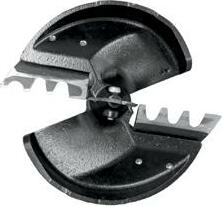
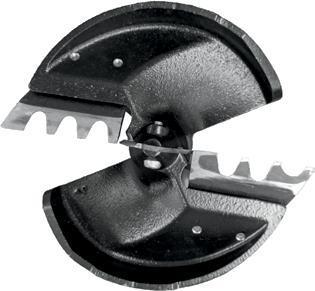
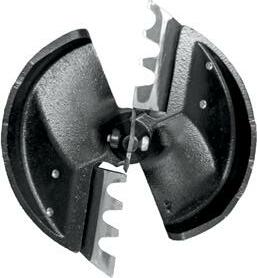

Tungsten jigs were on the end of our lines. Tungsten jigs weren’t popular 12 years and 2 weeks ago, but with the introduction of the Genz line-up of tungsten jigs, it’s now what most panfish anglers reach for. Tungsten enables us to fish tiny jigs efficiently because it’s denser than lead, which was mostly what ice jigs used to be made of. A tungsten jig that weighs the same as a lead jig is much smaller in physical size, and that’s important when panfish are the quarry.
12 years and 2 weeks ago, we all watched sonar units while we fished. We knew then and we still know that sonar will help us put fish on top of the ice. The difference today is the options for sonar. There is a sonar that will fit the needs of any ice angler. There’s a new one, just introduced in 2020, a FLX 30BB, that runs on a lithium battery. This battery will last longer, take more charges, and is significantly lighter in weight than traditional sonar batteries.
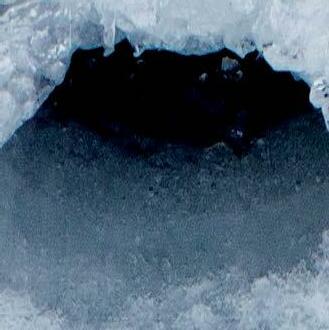


So, we caught a bunch of fish and compared the differences in equipment that we used 12 years and 2 weeks ago to the equipment that we used on this recent mid-January afternoon. So many differences, but one similarity: The camaraderie. We fished a little bit seriously, but we probably spent more time reminiscing about other fishing trips, friends that weren’t with us anymore, and a bunch of other things, some important, some not so important.
There’s more ice fishing to do, and open water isn’t so far away either. It’s fun to catch fish, that’s why we go fishing. But it’s also just as much fun and very important to appreciate and enjoy the people you’re fishing with. Keep that in mind every time you go fishing. And don’t let it be 12 years and 2 weeks in between trips with your fishing friends.
To see new and old episodes of Fishing the Midwest television, fishing articles and fishing videos, go to fishingthemidwest.com

Where do they come from, where do they go? A fun song or a method to the madness that is crappie fishing. Everyone says that crappie fishing is at it’s best in those first few hours of daylight in the morning, and they are not wrong. Much like walleye fishing at the crack of dawn, there is not much more out there in the world of ice fishing than watching a crappie scream up the column on your Vexilar, racing towards your presentation get you fire up.
Specs are a common term in Michigan for the Black Crappie we have, and they are a panfish

favorite here for their aggressive behavior while searching for food. As I mentioned in opener, there isn’t much while fishing through the ice that will get you to catch your breath as watching these fish charging your bait. Not often thought of as a predator, crappie are voracious eaters and they do not slow down once the lakes get covered in ice.
After fishing for them in five states across the Ice Belt during tourney seasons spanning the last 18 years, you either pick up on some of their habits or go bucketless while trying. Much like other predators like bass and pike, crappie often have their own
travel spots that they make during the day, They start “at home” in the morning and begin their daily routine.
At each key spot of their travels I will have several presentations rigged up at the ready, to meet any curveball they might throw at me. During tourneys, that could mean as many as 30 rods rigged if there was a sight fishing bite going on too. Typically I am a live bait diehard, tried and true, nothing (too much) new kind of angler. That said, I have been using plastics as early as 2002 when a company out of Wisconsin became the first to really revolutionize rubber baits, and we started calling them soft
plastics. Finally a plastic that didn’t just hang on the hook, but actually moved or wiggled with the action an angler provided by the cadence of the rod movements.
Typically those fish in the morning are so aggressive that I will pass on the live bait at first and drop down something to match their aggressive behavior. This is also the only time of the day where I will use a spinning reel on my rigged up combinations. Do spinning reels create more line spin, definitely, but with those big fish ready to strike first, I am not willing to take any chances. Besides, I have not created any spin….yet. Presentation
wise, it is go big, or go home, and will drop down a glow jig, like the glow red Drop Kick from Clam’s CPT lineup, matched up with a glow red/ pink Maki soft plastic presentation and be aggressive.
The morning bite has slowed down and you start to think, where did they go? By looking at the Navionics app on my phone I can search for clues, or more precise, travel patterns. Natural type runways that the crappie might follow to their next destination, and by that, I mean where are they going to eat next. I look for deep troughs, or drop-offs along contour lines where they can travel away from weedbeds,
in relative safety from fish higher up on the food chain.

Normally I would run a spoon, tipped with a minnow head, waxies or several spikes, but that has been done to death and everyone knows it, so will toss in one of those curveballs mentioned before. The night before the tourney, temperatures dropped 25 degrees, and the barometric pressure crashed. Time to go a little old school, Michigan style in 22 foot of water.
I had found these fish prefishing for a tourney in Wisconsin while there was a stable front that had
lasted three or four days. Those previously mentioned screamers were launching off the bottom and snatching baits at 12 foot on the drop. At that point line twist is not an issue because the baits never had a chance to settle at the depth I was going to target. Sunday morning rolls around and nothing is happening. Even with the zoom feature on the Vex it is hard to tell whether they are still there or not. This is where my “Michigan” kicks in and I pull out a combo with a Schooley on it, the original straight line reel, time to go into ultra finesse mode. Down the hole goes the 2 pound test tied on with a 2.5 mil jig with a size 18 hook, with a single spike threaded onto the hook.
Pounding the bottom is something you normally do while chasing bluegill and not crappie, but it was time to pull out all the stops. Specs are not often thought of as bug eaters but they were holding tight with the temperature and pressure drop. After smacking the bottom,

you could only lift it up a few inches, these fish were not going to come above their eye level. You also could not wait for the tell tale sign of the spring popping up with the
in their mouth and line became weightless. Set the hook and reel them up.
The point of this tale is stress the fact that these fish can migrate throughout a lake as the day progresses. Stay on top of them, they did not quit biting, they just moved on to the next feeding ground that they frequent each day. Look for natural highways where they might travel in between. Most importantly, don’t get frustrated when conditions change, they are still there, you just need to change your approach to continue your successful.
bite so you had to use the tightline trick of occasionally dropping the rod tip down to see if the line bunched up in your hole. The point here is that the specs had the jig
















The most important thing that Vermont guide and Ice Team pro James Vladyka has taught me in years of our ice fishing is the simple fact that minnows do not chase bigger fish.

He’s extended this thought to any kind of prey or edible item, like insect larva, eggs, you name it: food that game fish intend to eat doesn’t turn around and chase their pursuers.
Seems logical, and practie when you present a jig, a spoon or minnow lure to a gamefish -- everything from a bluegill to a pike -- your offering should not swim into the face of the bigger fish either as a threat or wearing the sign “eat me.” To do otherwise reminds Vladyka, he says, of the Ghost in the first Nintendo many years ago the ghost would chase mario trying to catch him but if mario stopped and looked back the ghost would stop as soon as mario
tried to run away again the ghost would follow trying to catch him.
In any case what happens if you chase the target fish with your bait is that the target fish turns and runs, well swims away quickly, Vladyka asserts.
Not having anything to do on a rainy winter day, instead of banging my head against a wall, I watched a bunch of Youtube videos of ice fishing. I’m drawn to those videos featuring an underwater camera. I love the scenes where the walleye, perch, or what have you comes out of the yellow dark, grab the bait and is suddenly yanked upwards. I’ve even started betting with myself whether the approaching fish will strike or swim away depending on the action of the lure. How sick is that?
Based on what Vladyka taught me, and I’ve since proven for myself hundreds of times, when a fish swims
into view you should not dangle the bait directly in its face. Instead, you should slowly raise the lure so that the fish rises with it. The cat is mesmerized by the mouse.
Also when a fish swings and misses at your bait, then swims slightly away and appears to be returning, you should not put the lure directly in its eyes, or even worse swim the lure towards the interested gamester. Over and over I’ve seen some camera jockeys do that and wonder why the fish spun around and dashed off.
“I guess they’re not biting today,” say the clueless.
However, for those who know what they’re doing, they continue to jiggle the lure at the same tempo that first attracted the fish then slowly, ever so slowly, lift the bait. What you’ll then see through the camera is a fish that is hypnotized by the rising bait and,
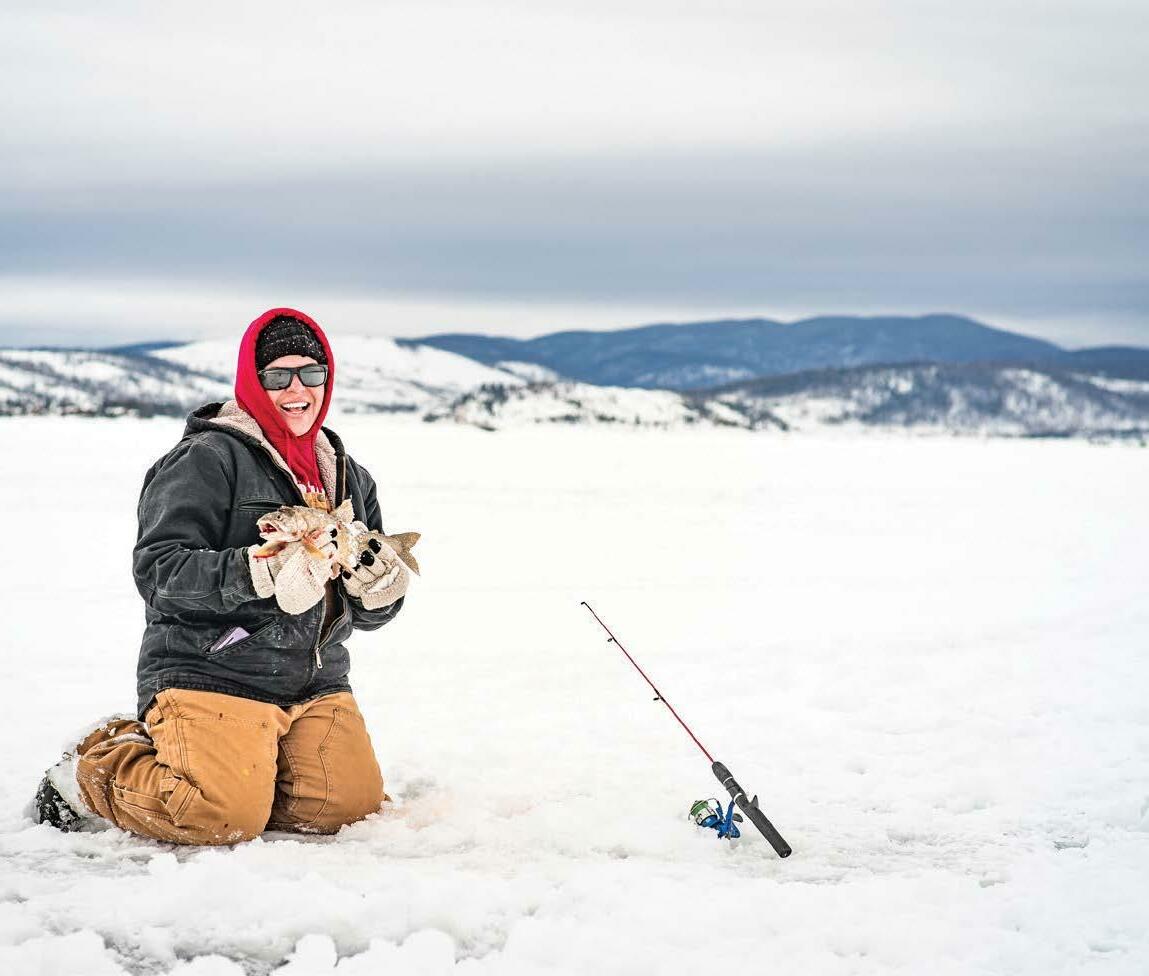

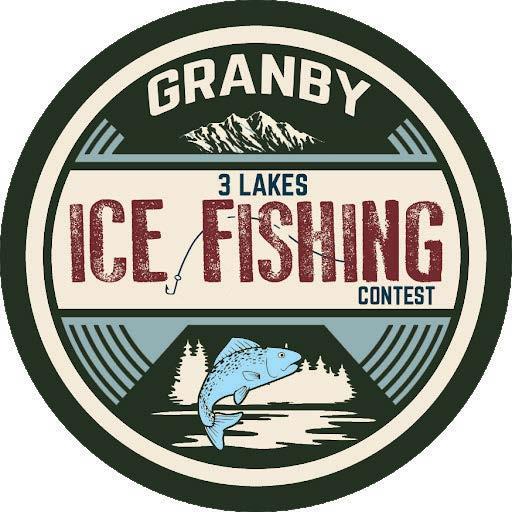


many times, this results in a strike.
If you’re not using a camera but a flasher this is what you may see on the screen and how you respond: your jig appears as a thin green line and seemingly out of nowhere appears a thicker red bar -- the approaching fish. If things are going really well, suddenly the red bar surrounds the green line so you snap the rod to attention and feel the strike.
However, many times the red bar engulfs the green line but you don’t feel any added line weight and there’s no hooked fish. Often when this occurs the fish has just bumped or possibly even exhaled on the the bait as Vladyka says, “Breathed on the bait” (a camera will show you this is a common occurrence). You feel nothing on the line but the gamefish has tested your bait.
Chances are after that test the fish
On a flasher the red bar will disappear and come back. The thick red bar will reappear on the dial and seemingly sit there, as it actually does. However if you keep motioning the lure on that same level you’ll often create a disinterested fish, and one likely to high tail it out of there especially if you suddenly increase the tempo of your jigging. In short you’re spooking the very fish you’re hoping to catch.
Using the Vladyka theory and my practice, I instead begin to lift the jig continuing the same tempo twitching. On the sonar, I’ll see the fish swimming up to the bait. On the flasher this appears as the red bar following the thin green bar several feet above the initial contact. Often the two colors will co-mingle again creating a thicker bar from the stronger sonar signal. When this occurs the gamester may have again lipped and tested the bait or, hopefully, vacuumed it in. If it’s just a lip touch you won’t feel anything on the rod but if the fish has taken the
lure you should feel the weight as you continue to lift the rod, then you strike.
I’d watched the incorrect techniques on so many tuber videos it took Vladyka’s not-so-gentle prompting to set me straight. Now I notice when someone does it the wrong or the correct way on their camera and flasher screens.
Another advantage of slowly teasing the fish upwards is that most hook-sets are in the upper jaw or the top of the mouth. Vladyka says this occurs because when a jig is just held horizontally it often spins resulting in missed sets. I’d add that as both the target fish and the jig or spoon is moving up the fish strikes from a slightly lower angle and the top jaw is the first to come down on the bait.

Once you start practice this method of teasing a fish upwards I think you’ll get a lot more solid strikes.


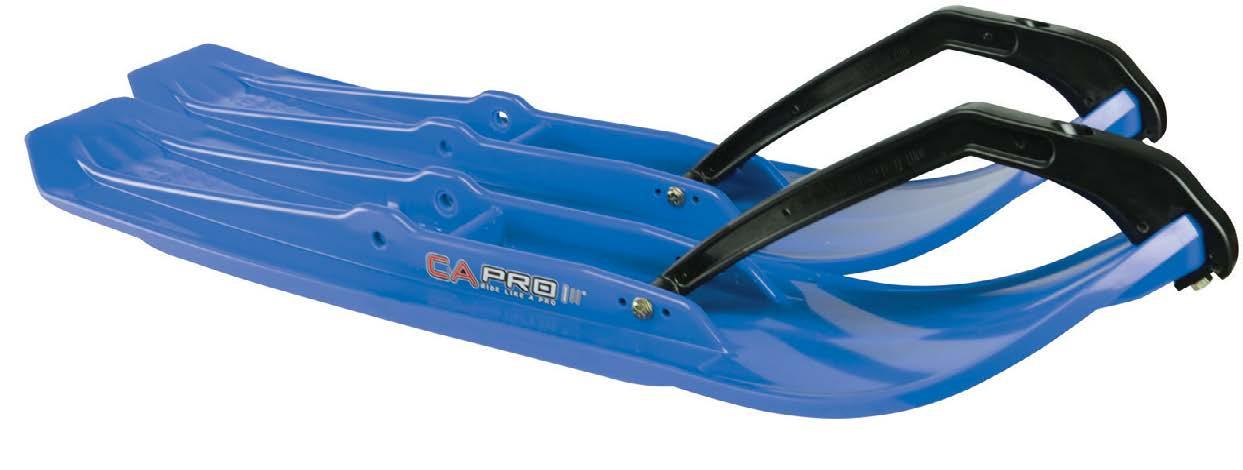
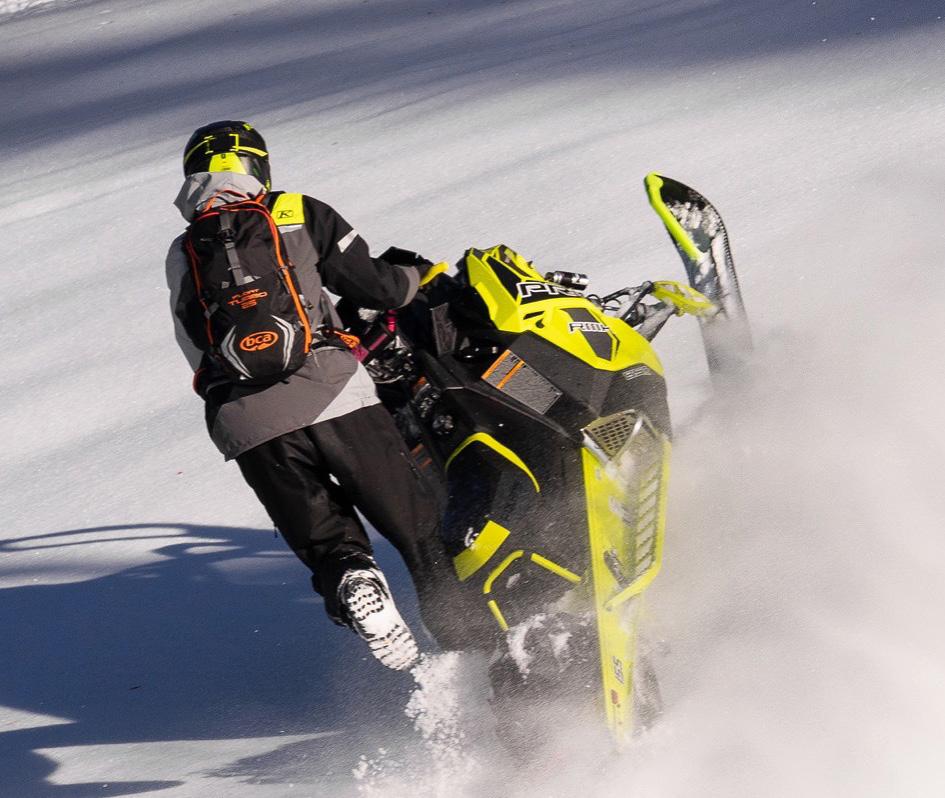


 By: Ice Team Pro, Ryan Salemi
By: Ice Team Pro, Ryan Salemi
By now, winter has tightened its grip on us all here in the ice belt. Long gone are the days of great fishing action that the months of December and January supplied us with...right? Wrong! As an avid ice angler, I refuse to give in to the term “doldrums” or commonly known in the ice fishing community as, “The Winter Doldrums”. Here are few tips I incorporate into my game plan in order to consistently catch fish no matter what the calendar reads.
Many man-made lakes, ponds and impoundments that we all love to fish early in the season can start to lose their luster and what once seemed like a never-ending hot bite has all the sudden begun to slow down and seem like a dead sea. A key factor that plays a big role in this happening is a natural occurring series of events. It starts with snow cover, by now much of the ice belt has accrued
enough snow to cover the ice...in some cases, several inches. Heavy snow cover decreases the amount of natural sunlight that can penetrate through the water column and breathe life into most aquatic plants. Without sunlight, these plants or weeds will often die out and that in turn decreases the amount of oxygen available for underwater life. So, in most cases, the fish will start to slow down as well, often only feeding in small windows. It’s then up to us anglers to determine when these windows are occurring. My advice for you would be to concentrate on pre-dawn hours, fishing (5am to 7am) or the sunset hours (4pm to 6pm). Over the years no matter what the calendar says or what the conditions are, I’ve found these hours to provide the best opportunity for hooking up and putting fish topside (especially panfish).
Another option, is to start fishing chain lakes (several lakes linked together by a common waterway), flowage systems (dammed up river systems), river system backwaters(use caution) or lakes containing several active springs(again, use caution and know your lakes). All these options can provide some form of moving water or current, which in turn can keep oxygen levels efficient enough to make it more ideal for most fish species. By the end of February and through mid-March, you will find me fishing these types of systems with very good success rates!
So, give these types of water systems a shot if your bite elsewhere starts to slow down...I’d love to hear your results!
HEAVY SNOW COVER DECREASES THE AMOUNT OF NATURAL SUNLIGHT THAT CAN PENETRATE THROUGH THE WATER COLUMN AND BREATHE LIFE INTO MOST AQUATIC PLANTS. WITHOUT SUNLIGHT, THESE PLANTS OR WEEDS WILL OFTEN DIE OUT AND THAT IN TURN DECREASES THE AMOUNT OF OXYGEN AVAILABLE FOR UNDERWATER LIFE. SO, IN MOST CASES, THE FISH WILL START TO SLOW DOWN AS WELL, OFTEN ONLY FEEDING IN SMALL WINDOWS. IT’S THEN UP TO US ANGLERS TO DETERMINE WHEN THESE WINDOWS ARE OCCURRING.


